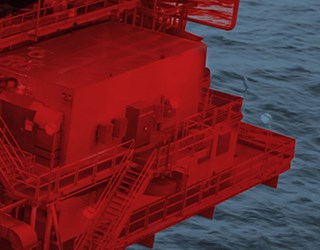NEWS Centralizers on Chrome Tubulars: Understanding Corrosion and Compatibility
When investing in Corrosion-Resistant Alloy (CRA) casing—especially high-chromium stainless steels—operators rightly expect long-term performance in corrosive environments. But what happens when you introduce another metal into the system—like a steel centralizer? A common misconception is that this pairing increases corrosion risk to the tubular. In reality, the opposite is typically true.
This article breaks down the science behind the interaction between centralizers and chrome tubulars and explains how to manage corrosion risks effectively.
MYTH: Steel centralizers cause chrome tubulars to corrode faster.
FACT: Steel centralizers protect chrome tubulars from corrosion.
Let’s start with a key concept: Galvanic Corrosion.
What is Galvanic Corrosion?
When two different metals are in electrical contact in the presence of an electrolyte (like saltwater), one will corrode faster than it would alone—the anodic material—while the other is protected—the cathodic material.
In the case of CRA tubulars and standard steel centralizers:
-
The centralizer (steel) is less noble and becomes the anode, meaning it corrodes.
-
The chrome tubular (e.g., 13% chromium stainless steel) is more noble and becomes the cathode, meaning it is protected.
This is not just theory—it’s a predictable outcome, as demonstrated in the Galvanic Series, which ranks metals by their corrosion tendency in seawater.
The Galvanic Series (Simplified)
From most anodic (corrodes easily) to most cathodic (resistant to corrosion):
Magnesium
Zinc
Aluminium
Mild Steel or Iron
Cast Iron
Chromium stainless steel (active)
Lead
Tin
Nickel (active)
Brass
Copper
Bronzes
Copper - Nickel alloys
Monel
Silver Solder
Nickel (passive)
Inconel (passive)
Chromium Stainless Steel (passive)
Titanium
Silver
Graphite
Gold
Platinum
The greater the distance between two metals in this list, the stronger the galvanic effect—and the faster the anode corrodes.
So, when a spring steel centralizer (anodic) contacts a chrome tubular (cathodic), the centralizer sacrifices itself, helping preserve the integrity of the tubular.
The Role of Surface Area in Galvanic Corrosion
It is important to consider the effect of 'relative areas'. In this instance the tubulars present a much greater area than the less noble centralisers and therefore the rate of corrosive attack on the latter will be increased.
What About Stop Collars?
By definition the methods of fixing the stop collar to the tubulars using steel screws or wedging spiral nails create a 'stress corrosion' condition. Hairline cracks can occur in the stressed contact zone and will advance more quickly than they widen. Until such times as non-intrusive fixing devices are invented; care must be taken in selecting the stop collars. It is possible to use screws compatible with the chrome tubular but contained within a conventional steel ring body. The galvanic and stress corrosion of the screws within the stop ring can be negated with the use of simply applied coatings to the threaded areas.
We offer a choice of steel or stainless steel set screws for the majority of our stop collars
Best Practices When Using Centralizers on CRA Tubulars
-
Understand the galvanic relationship
Centralizers generally act as sacrificial components and protect the more valuable CRA tubulars. -
Select materials wisely
Use spring steel centralizers with awareness of their galvanic behavior. If in doubt, consult the Galvanic Series. -
Be cautious with mechanical fixings
Stop collars using screws or nails should be selected and installed with care to avoid stress corrosion. -
Consider coatings and compatibility
Use coatings to isolate dissimilar metals or match fastener materials with tubulars to reduce corrosion risks.
Conclusion: Don’t Let Misconceptions Drive Material Choices
The use of steel centralizers on chrome tubulars is not only safe—it can be beneficial. Understanding how galvanic corrosion works empowers operators and engineers to make better material and design choices. CRA casing is a significant investment. Let’s protect it with the right accessories and an informed approach.
Further Reading
PERA (Production Engineering Research Association). Various publications on corrosion and material performance. Production Engineering Research Association, UK.
Fontana, M.G., 1985. Corrosion Engineering. 3rd ed. New York: McGraw-Hill.
Schweitzer, P.A., 1989. Corrosion and Corrosion Protection Handbook. 2nd ed. New York: Marcel Dekker.

